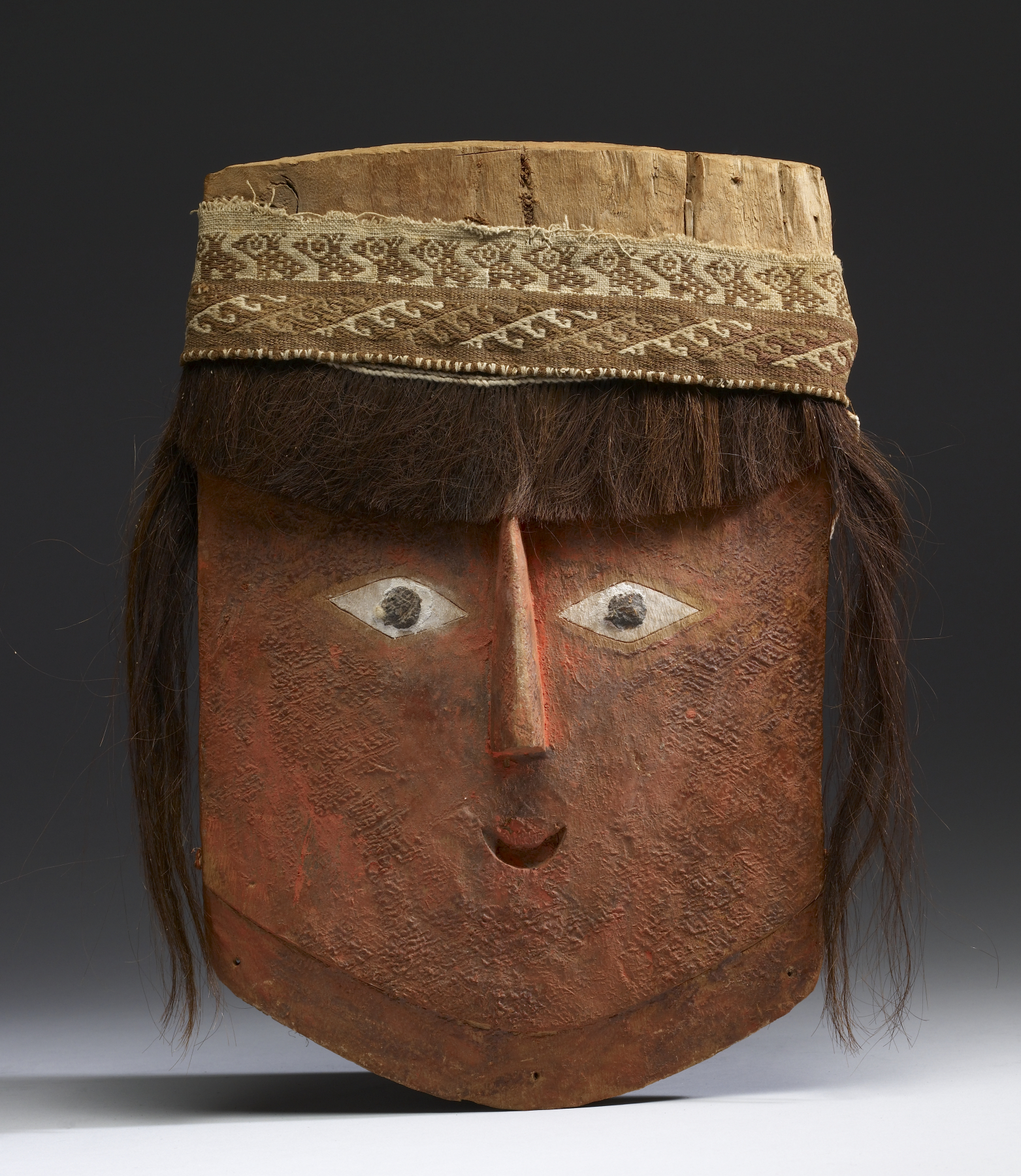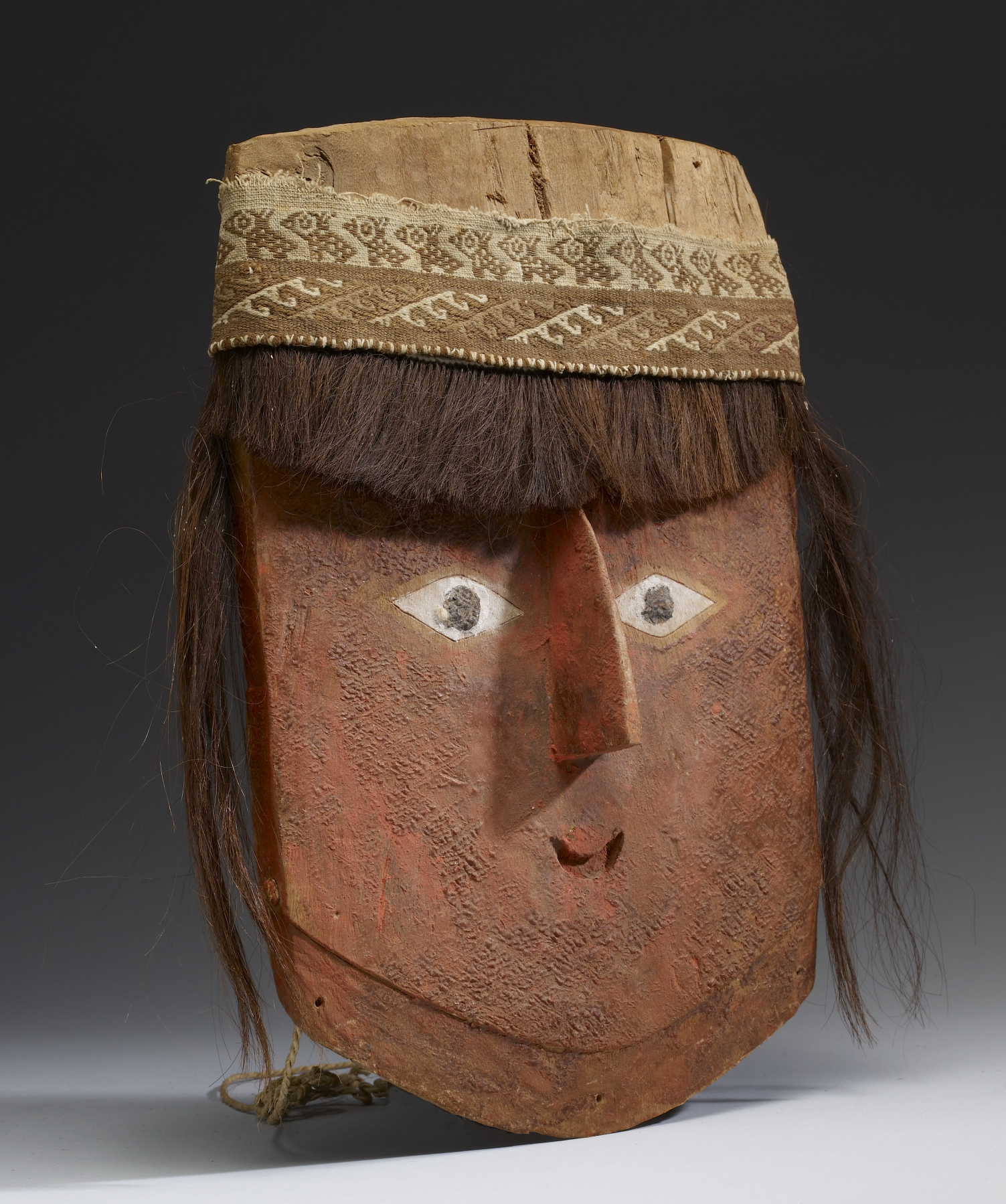Mummy Mask with Wig
(Ancient Americas )
Andean cultures are located close to some of the most arid deserts in the world, and perhaps the natural mummification that ancient peoples there observed inspired them to adapt their mortuary practices to augment natural processes. In many cultures of the region, bodies were carefully prepared to last for centuries or millennia, and were buried with elaborate offerings, always including large quantities of textiles. Since bodies were usually buried in an upright fetal position (with head on knees), when wrapped with layers and layers of lavish textiles, the mummy bundles did not have a clear head to act as a focal point for veneration. Therefore, “false heads” of wrapped textiles were created for the top of such bundles, and in some cases wooden masks, showing a stylized face, were tied on to such bundles. For the Chancay people, these were not portraitlike, but had very simplified features, with wide, diamond-shaped eyes and long straight noses, as well as frequently including a “wig” of hair that hangs down on either side of the face. More elaborate textiles are also often wrapped around the top of such masks, imitating the turbanlike headcoverings worn by the Chancay. These are often painted red, a color associated with purifying or commemorative rituals in the Andes. In this case, it seems that even the mask itself was later wrapped in even more textiles, which through the centuries have left a patterned impression on the mask.
Provenance
Provenance (from the French provenir, 'to come from/forth') is the chronology of the ownership, custody, or location of a historical object.
New World Antiquities, San Francisco; purchased by a private collection, 1988; given to Walters Art Museum, 2009.
Exhibitions
| 2018 | Crowning Glory: Art of the Americas. The Walters Art Museum, Baltimore. |
Conservation
| Date | Description | Narrative |
|---|---|---|
| 6/29/2017 | Examination | examined for exhibition; examined for technical study; x-ray florescence |
| 6/29/2017 | Examination | Examined for a technical study. X-ray fluorescence spectroscopy confirmed the presence of a mercury-containing pigment on the surface indicating the mask was painted with cinnabar. Detached hair fibers were mounted and examined using polarized light microscopy and identified as probably being human hair. |
Geographies
Peru (Place of Origin)
Measurements
H: 12 x W: 8 x D: 1 7/8 in. (30.5 x 20.3 x 4.8 cm)
Credit Line
Anonymous gift, 2009
Location in Museum
Not on view
Accession Number
In libraries, galleries, museums, and archives, an accession number is a unique identifier assigned to each object in the collection.
In libraries, galleries, museums, and archives, an accession number is a unique identifier assigned to each object in the collection.
61.355




